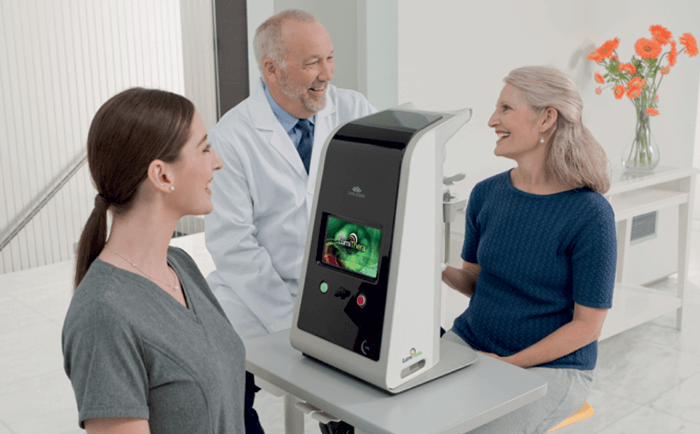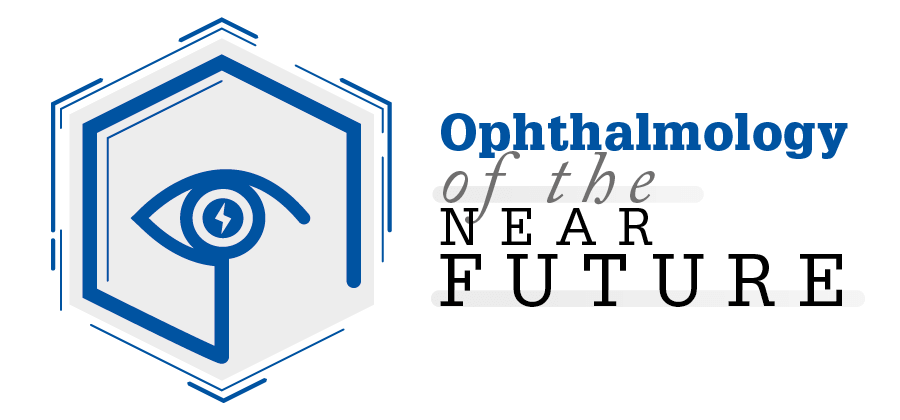
As the world’s population ages, degenerative ocular diseases are increasingly common. Particularly affecting people over the age of 65, AMD accounts for 8.7 percent of all blindness worldwide and is the most common cause of blindness in developed countries (1). With dry AMD affecting approximately 85-90 percent of AMD patients, the current lack of viable treatment options – other than vitamin supplementation and lifestyle modifications – is a serious issue (2).
Setting the standard
LumiThera aims to tackle this issue head on with the launch of the Valeda® Light Delivery System – the first ophthalmic treatment using photobiomodulation (PBM).* Now approved in the EU and multiple countries around the world, Valeda has been shown to improve visual acuity, contrast sensitivity, and reduce central drusen volume in patients with dry AMD. Valeda uses multiwavelength PBM – also known as low-level light therapy – to stimulate critical targets of cellular function, leading to improved energy production within the mitochondria, improved cellular function, and reduced inflammation. This non-invasive treatment also boasts an excellent safety profile with no signs of phototoxicity (3).
To assess the safety and efficacy of PBM in subjects with intermediate dry AMD, LumiThera completed a 13-month analysis from the LIGHTSITE III study; a prospective, double-masked, randomly assigned, multi-center clinical trial. Study findings showed a statistically significant difference between the PBM and Sham treatment groups (p = 0.02). PBM treatment with Valeda provided a sustained and improved best corrected visual acuity (BCVA) with a mean of 5.4-letter change (least squared means) from baseline letter gain (p < 0.0001) (4).
Synergistic diagnostic and monitoring biomarkers of AMD disease
In addition to developing and launching Valeda therapy for AMD, LumiThera’s vision is to address degenerative eye disease early, before permanent vision loss. LumiThera acquired Diopsys electroretinography (ERG) systems in February 2022 and purchased the MacuLogix AdaptDx assets in July 2022, both of which add to its ophthalmology portfolio. The Diopsys ERG system allows doctors to detect vision dysfunction early, track disease progression, and monitor treatment protocols by providing objective, quantitative, and functional vision measures. The AdaptDx Pro® – formerly owned by MacuLogix and backed by over 20 years of proven clinical research – measures dark adaptation speed, which can indicate the presence of AMD up to three years earlier than other tests.
Data from the two year pivotal LIGHTSITE III trial in earlier diseased patients with intermediate dry AMD will be used to support Valeda approval in the US pending FDA review. Valeda is lighting the path forward for future AMD treatment and developing a unique treatment modality with potential translation for additional eye diseases.
* Valeda is in clinical trials and not approved by the FDA in the US.

References
- S Resnikoff et al., “Global data on visual impairment in the year 2002,” Bull World Health Organ, 82, 844 (2004). PMID: 15640920.
- J Ambati, BJ Fowler, “Mechanisms of age-related macular degeneration,” Neuron, 75, 26 (2012). PMID: 22794258.
- MR Hamblin, TN Demidova, “Mechanisms of low level light therapy," SPIE BiOS (2006).
- M Munk et al., LIGHTSITE III (13-Month Topline Analysis): Evaluation of Multiwavelength Photobiomodulation in Dry Age-Related Macular Degeneration Using the LumiThera Valeda Light Delivery System. Invest Ophthalmol Vis Sci. 2022; ARVO E-Abstract 3713186.
